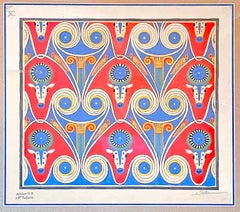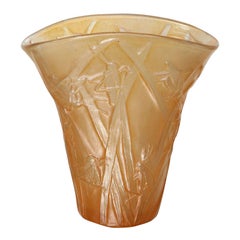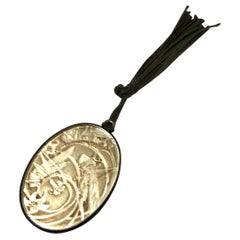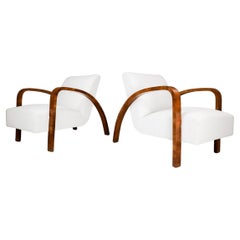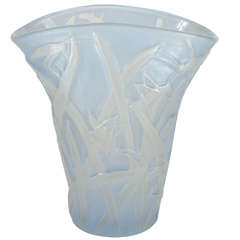Art Deco Grasshopper
Vintage 1920s French Art Deco Paintings
Paint
Vintage 1930s American Art Deco Vases and Vessels
Glass
Vintage 1910s French Art Deco More Mirrors
Blown Glass
Recent Sales
Early 20th Century Austrian Art Deco Armchairs
Bouclé, Walnut
Vintage 1930s American Art Deco Vases
Vintage 1930s American Art Deco Vases
Vintage 1910s French Art Deco Vases
Blown Glass
Vintage 1910s French Art Deco Vases
Blown Glass
Vintage 1910s French Art Deco Vases
Blown Glass
Vintage 1910s French Art Deco Vases
Blown Glass
Vintage 1910s French Art Deco Vases
Blown Glass
Vintage 1910s French Art Deco Vases
Blown Glass
Vintage 1910s French Art Deco Vases
Blown Glass
Vintage 1910s French Art Deco Vases
Blown Glass
Vintage 1910s French Art Deco Vases
Blown Glass
Vintage 1920s Austrian Art Deco Vases
Art Glass
Vintage 1930s French Art Deco Vases
Art Glass
People Also Browsed
2010s South African Minimalist Pedestals
Hardwood
Vintage 1960s Swedish Mid-Century Modern Fireplace Tools and Chimney Pots
Wrought Iron
Early 20th Century English Art Deco Fireplaces and Mantels
Wood
Vintage 1930s Finnish Art Deco Chandeliers and Pendants
Metal, Brass
Early 20th Century French Art Nouveau Table Lamps
Alabaster, Bronze
Vintage 1920s French Vases
Glass
Vintage 1920s Collectible Jewelry
Glass
2010s Italian Modern Commodes and Chests of Drawers
Wood, Oak
Vintage 1950s American Mid-Century Modern Cabinets
Mahogany
Mid-20th Century French Art Deco Vases
Crystal
21st Century and Contemporary Modern Table Clocks and Desk Clocks
Plastic
Early 20th Century French Art Nouveau Jewelry Boxes
Metal
20th Century French Art Nouveau Vases
Crystal
20th Century French Art Nouveau Coffee and Cocktail Tables
Metal
Antique Early 1900s French Art Nouveau Side Tables
Walnut
Vintage 1920s Algerian Art Nouveau Glass
Art Glass
Art Deco Grasshopper For Sale on 1stDibs
How Much is a Art Deco Grasshopper?
A Close Look at Art-deco Furniture
Art Deco furniture is characterized by its celebration of modern life. More than its emphasis on natural wood grains and focus on traditional craftsmanship, vintage Art Deco dining chairs, tables, desks, cabinets and other furniture — which typically refers to pieces produced during the 1920s and 1930s — is an ode to the glamour of the “Roaring Twenties.”
ORIGINS OF ART DECO FURNITURE DESIGN
- Emerged in the 1920s
- Flourished while the popularity of Art Nouveau declined
- Term derives from 1925’s Exposition Internationale des Arts Décoratifs et Industriels Modernes (International Exhibition of Modern Decorative and Industrial Arts) in Paris, France
- Informed by Ancient Egypt, Cubism, Futurism, Louis XVI, De Stijl, modernism and the Vienna Secession; influenced Streamline Moderne and mid-century modernism
CHARACTERISTICS OF ART DECO FURNITURE DESIGN
- Bold geometric lines and forms, floral motifs
- Use of expensive materials such as shagreen or marble as well as exotic woods such as mahogany, ebony and zebra wood
- Metal accents, shimmering mirrored finishes
- Embellishments made from exotic animal hides, inlays of mother-of-pearl or ivory
ART DECO FURNITURE DESIGNERS TO KNOW
VINTAGE ART DECO FURNITURE ON 1STDIBS
Few design styles are as universally recognized and appreciated as Art Deco. The term alone conjures visions of the Roaring Twenties, Machine Age metropolises, vast ocean liners, sleek typography and Prohibition-era hedonism. The iconic movement made an indelible mark on all fields of design throughout the 1920s and ’30s, celebrating society’s growing industrialization with refined elegance and stunning craftsmanship.
Widely known designers associated with the Art Deco style include Émile-Jacques Ruhlmann, Eileen Gray, Maurice Dufrêne, Paul Follot and Jules Leleu.
The term Art Deco derives from the name of a large decorative arts exhibition held in Paris in 1925. “Art Deco design” is often used broadly, to describe the work of creators in associated or ancillary styles. This is particularly true of American Art Deco, which is also called Streamline Moderne or Machine Age design. (Streamline Moderne, sometimes known as Art Moderne, was a phenomenon largely of the 1930s, post–Art Nouveau.)
Art Deco textile designers employed dazzling floral motifs and vivid colors, and while Art Deco furniture makers respected the dark woods and modern metals with which they worked, they frequently incorporated decorative embellishments such as exotic animal hides as well as veneers in their seating, case pieces, living room sets and bedroom furniture.
From mother-of-pearl inlaid vitrines to chrome aviator chairs, bold and inventive works in the Art Deco style include chaise longues (also known as chaise lounges) and curved armchairs. Today, the style is still favored by interior designers looking to infuse a home with an air of luxury and sophistication.
The vintage Art Deco furniture for sale on 1stDibs includes dressers, coffee tables, decorative objects and more.
Finding the Right Vases for You
Whether it’s a Chinese Han dynasty glazed ceramic wine vessel, a work of Murano glass or a hand-painted Scandinavian modern stoneware piece, a fine vase brings a piece of history into your space as much as it adds a sophisticated dynamic.
Like sculptures or paintings, antique and vintage vases are considered works of fine art. Once offered as tributes to ancient rulers, vases continue to be gifted to heads of state today. Over time, decorative porcelain vases have become family heirlooms to be displayed prominently in our homes — loved pieces treasured from generation to generation.
The functional value of vases is well known. They were traditionally utilized as vessels for carrying dry goods or liquids, so some have handles and feature an opening at the top (where they flare back out). While artists have explored wildly sculptural alternatives over time, the most conventional vase shape is characterized by a bulbous base and a body with shoulders where the form curves inward.
Owing to their intrinsic functionality, vases are quite possibly versatile in ways few other art forms can match. They’re typically taller than they are wide. Some have a neck that offers height and is ideal for the stems of cut flowers. To pair with your mid-century modern decor, the right vase will be an elegant receptacle for leafy snake plants on your teak dining table, or, in the case of welcoming guests on your doorstep, a large ceramic floor vase for long tree branches or sticks — perhaps one crafted in the Art Nouveau style — works wonders.
Interior designers include vases of every type, size and style in their projects — be the canvas indoors or outdoors — often introducing a splash of color and a range of textures to an entryway or merely calling attention to nature’s asymmetries by bringing more organically shaped decorative objects into a home.
On 1stDibs, you can browse our collection of vases by material, including ceramic, glass, porcelain and more. Sizes range from tiny bud vases to massive statement pieces and every size in between.
